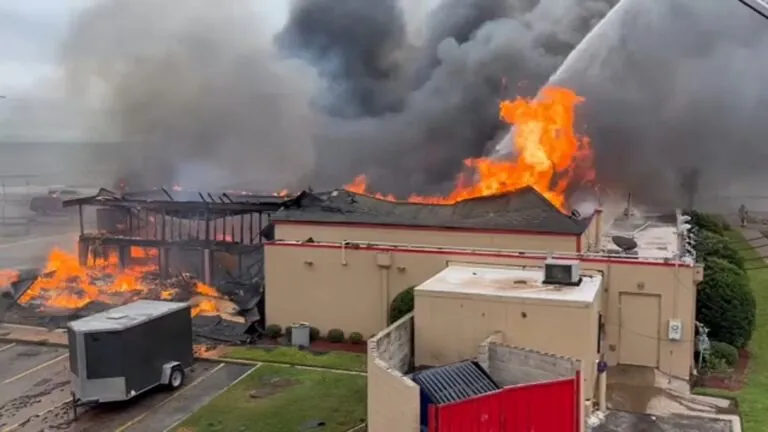Guide to Asbestos Siding (2023)
It’s not uncommon to find asbestos siding in older homes. While it’s not harmful when left undisturbed, it can be a serious health risk if disrupted during renovations or construction work. That’s why it’s crucial to be mindful of the presence of asbestos in your own home and take necessary precautions to prevent exposure.
Asbestos siding is a type of siding that was commonly used in homes built before the 1970s. It is made of asbestos fibres, once considered a desirable material due to their durability and fire-resistant properties. However, it is now known that asbestos can be extremely hazardous to human health and can cause lung cancer and other respiratory illnesses. Asbestos siding may still be present in older homes and should be cautiously handled. Homeowners should consider replacing asbestos siding to protect their health and the health of anyone who may live in or visit the house.
What Is Asbestos Siding?
Asbestos siding is a type of siding that was commonly used in homes and buildings between the 1920s and 1980s. It is made from asbestos fibres and cement, a popular building material due to its durability and resistance to fire and insects. However, it was later discovered that asbestos can cause serious health problems, including lung cancer and mesothelioma, when inhaled fibres. As a result, the use of asbestos in construction was banned in many countries. Despite the health risks, many older buildings still have asbestos siding, which requires careful removal and disposal by trained professionals to avoid exposure to harmful fibres.
Asbestos siding refers to a type of cement siding that contains asbestos. This material was widely used in house siding due to its exceptional durability, particularly in pest and fire resistance. Although asbestos is commonly associated with internal insulation, many homeowners are unaware that their house siding may contain asbestos.
If you have a home built before 1990, it may have asbestos siding. Asbestos was widely used in siding during the 20th century because it offered additional protection against fire and weather elements. This made it easier to insulate and maintain homes. However, the cost of safely removing asbestos can quickly outweigh these benefits if the material has been present for a long time. You can check out this article to learn more about when asbestos was used in homes.
Is Asbestos Siding Dangerous? – Understanding the Risks Involved
If left alone, asbestos siding is not considered harmful. However, the danger arises when the material is disturbed, causing it to release tiny fibres into the air. These fibres can pose a significant health risk if inhaled and are associated with various long-term diseases. That’s why using asbestos in residential construction was banned decades ago.
Although one might assume that leaving asbestos siding untouched is safe, it is advisable to replace it, particularly in older homes where the siding may have been installed decades ago and is now brittle and prone to crumbling.
What Asbestos Siding Looks Like Identifying the Hazardous Material
Asbestos siding can often resemble shingle or wood-grain siding, as it was commonly designed to imitate both. However, it can come in various forms and is challenging to identify. The most effective way to determine if the siding contains asbestos is to examine its age. Some sidings may have markings that indicate when the material was produced or installed. If the date is after 1960, the siit’sding likely doesn’doesn’tin asbestos.
Asbestos sidings often exhibit a distinct shingle-like pattern, which can be a helpful indicator of what lies beneath. However, it’s important to note that this is not always the case, and this pattern does not necessarily mean that your home contains asbestos.
Should You Replace Your Asbestos Siding?
Once asbestos siding has been positively identified, replacing it’s, it’s a wise decision. While you may believe that leaving it untouched is harmless, disturbing it even slightly can pose a severe health risk. Therefore, it’s better to replace it as soon as possible to ensure the safety of you and your loved ones.
Suppose you plan to give your home a fresh coat of paint. In that case, you may have to sand down the siding to eliminate the existing skin. However, this seemingly harmless activity can cause asbestos exposure. Sanding can disturb the asbestos-containing materials, releasing their fibres into the air.
Before undertaking any significant repairs to your home, it is essential to remove any traces of asbestos safely. Failing to do so can result in unexpected expenses for your remodelling project. It is crucial to prioritize safety when dealing with asbestos in your home.
Does Asbestos Siding Impact Resale Value?
While asbestos siding can hurt the resale value of your home, it may not be significant. Some potential buyers may not be bothered by the presence of asbestos, especially if they have no plans to make renovations, as long as it is left undisturbed. However, others may be immediately put off by the mention of the material. If you are considering selling your home in the future, going the asbestos siding as is could be a risky decision.
You might get lucky and find a buyer who doesn’t see the presence of asbestos in your home. However, this isn’t anything you can rely on. If you live in a smaller community, the opposite might happen. Once word spreads that your home has asbestos, potential buyers might use this to negotiate a lower price, even if they’re concerned about it. This can be frustrating, but it’s essential to be aware of the potential impact of asbestos on the value of your property.
The Important Facts About Asbestos Siding
It would be best to ignore The ordonnance of asbestos siding in your home. Knowing where it is located within the structure can be incredibly helpful when planning future renovation projects involving significant construction. So, it’s essential to take the time to identify which parts of your home contain asbestos and be prepared.
If you do not have any immediate plans to sell your home, making any changes to your asbestos siding may not be necessary. However, if you decide to put your property on the market, it is crucial to prioritize addressing this issue.
Also Read:
- Guide to Identifying Freon Leak Odor (2023)
- Gas Odor in Your Home: A Guide On Things To Know
- 7 Toxic Signs Of Detecting the Presence of Black Mold in Air Vents
- Is It Advisable to Purchase a Property near Power Lines? (2023)







